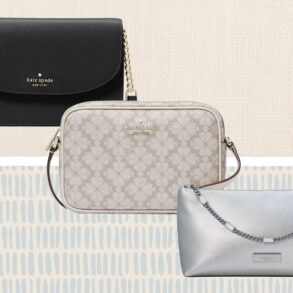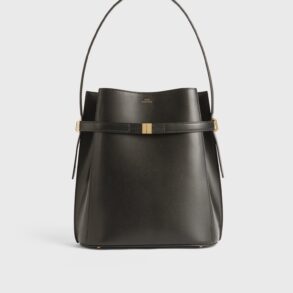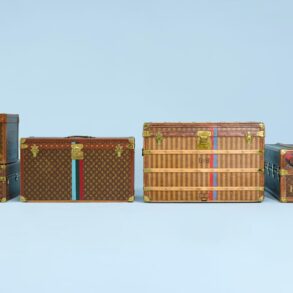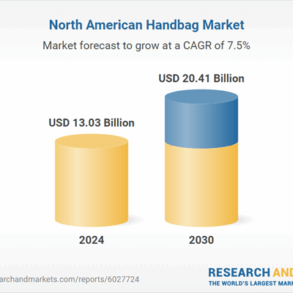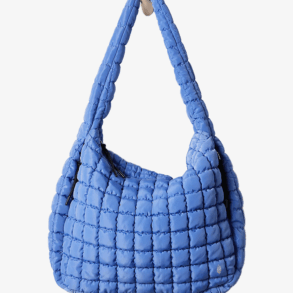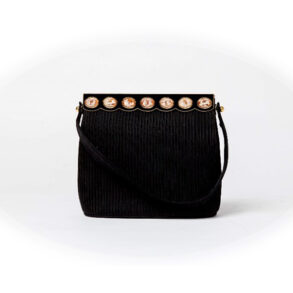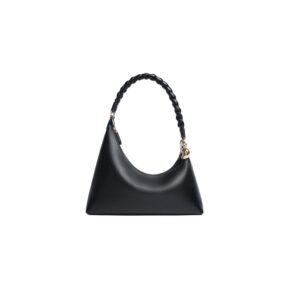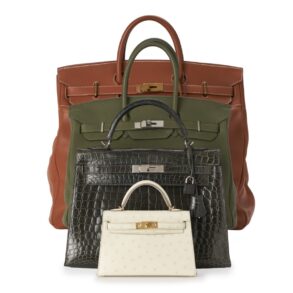Jun 20, 2025
IndexBox has just published a new report: Asia – Handbags – Market Analysis, Forecast, Size, Trends And Insights.
The handbag market in Asia is expected to experience a significant upward trend in consumption over the next decade, with a forecasted CAGR of +1.6% in volume and +1.7% in value from 2024 to 2035. This growth is fueled by the rising demand for handbags in the region, indicating a promising expansion in market performance.
Market Forecast
Driven by increasing demand for handbags in Asia, the market is expected to continue an upward consumption trend over the next decade. Market performance is forecast to accelerate, expanding with an anticipated CAGR of +1.6% for the period from 2024 to 2035, which is projected to bring the market volume to 2.4B units by the end of 2035.
In value terms, the market is forecast to increase with an anticipated CAGR of +1.7% for the period from 2024 to 2035, which is projected to bring the market value to $19.5B (in nominal wholesale prices) by the end of 2035.

Consumption
Asia’s Consumption of Handbags
In 2024, consumption of handbags decreased by -2% to 2B units, falling for the second year in a row after two years of growth. Over the period under review, consumption, however, continues to indicate a relatively flat trend pattern. As a result, consumption reached the peak volume of 2.2B units. From 2023 to 2024, the growth of the consumption remained at a somewhat lower figure.
The value of the handbag market in Asia dropped to $16.1B in 2024, falling by -3.2% against the previous year. This figure reflects the total revenues of producers and importers (excluding logistics costs, retail marketing costs, and retailers’ margins, which will be included in the final consumer price). In general, consumption, however, showed slight growth. Over the period under review, the market reached the peak level at $16.6B in 2023, and then contracted in the following year.
Consumption By Country
The countries with the highest volumes of consumption in 2024 were China (654M units), India (443M units) and Indonesia (146M units), together comprising 62% of total consumption.
From 2013 to 2024, the most notable rate of growth in terms of consumption, amongst the leading consuming countries, was attained by India (with a CAGR of +6.0%), while consumption for the other leaders experienced more modest paces of growth.
In value terms, China ($2.2B), South Korea ($2.1B) and Bangladesh ($1.7B) constituted the countries with the highest levels of market value in 2024, with a combined 37% share of the total market. Vietnam, Turkey, Pakistan, Indonesia, Thailand, India and Myanmar lagged somewhat behind, together accounting for a further 28%.
In terms of the main consuming countries, Thailand, with a CAGR of +7.3%, saw the highest growth rate of market size over the period under review, while market for the other leaders experienced more modest paces of growth.
The countries with the highest levels of handbag per capita consumption in 2024 were South Korea (1,181 units per 1000 persons), Thailand (1,096 units per 1000 persons) and Turkey (761 units per 1000 persons).
From 2013 to 2024, the biggest increases were recorded for India (with a CAGR of +5.0%), while consumption for the other leaders experienced more modest paces of growth.
Production
Asia’s Production of Handbags
In 2024, approx. 4.3B units of handbags were produced in Asia; picking up by 3.3% compared with the previous year. Overall, production recorded a relatively flat trend pattern. The pace of growth appeared the most rapid in 2016 with an increase of 111%. As a result, production reached the peak volume of 8.1B units. From 2017 to 2024, production growth remained at a lower figure.
In value terms, handbag production rose modestly to $19.8B in 2024 estimated in export price. The total output value increased at an average annual rate of +1.1% from 2013 to 2024; however, the trend pattern indicated some noticeable fluctuations being recorded throughout the analyzed period. The pace of growth was the most pronounced in 2016 with an increase of 39% against the previous year. As a result, production attained the peak level of $23.9B. From 2017 to 2024, production growth remained at a lower figure.
Production By Country
The country with the largest volume of handbag production was China (2.9B units), accounting for 67% of total volume. Moreover, handbag production in China exceeded the figures recorded by the second-largest producer, India (628M units), fivefold. Vietnam (164M units) ranked third in terms of total production with a 3.8% share.
In China, handbag production contracted by an average annual rate of -1.6% over the period from 2013-2024. In the other countries, the average annual rates were as follows: India (+5.6% per year) and Vietnam (+10.9% per year).
Imports
Asia’s Imports of Handbags
In 2024, overseas purchases of handbags increased by 1.1% to 741M units, rising for the fourth year in a row after three years of decline. The total import volume increased at an average annual rate of +2.2% over the period from 2013 to 2024; however, the trend pattern indicated some noticeable fluctuations being recorded in certain years. The most prominent rate of growth was recorded in 2021 when imports increased by 44% against the previous year. Over the period under review, imports attained the peak figure in 2024 and are likely to continue growth in the near future.
In value terms, handbag imports reduced to $16.1B in 2024. Over the period under review, imports posted buoyant growth. The pace of growth was the most pronounced in 2021 with an increase of 35% against the previous year. Over the period under review, imports attained the peak figure at $17.8B in 2023, and then dropped in the following year.
Imports By Country
India was the key importing country with an import of around 320M units, which accounted for 43% of total imports. It was distantly followed by Thailand (81M units) and South Korea (45M units), together creating a 17% share of total imports. Indonesia (25M units), Uzbekistan (20M units), Taiwan (Chinese) (19M units), the Philippines (19M units), Japan (19M units), Hong Kong SAR (18M units) and China (18M units) followed a long way behind the leaders.
From 2013 to 2024, average annual rates of growth with regard to handbag imports into India stood at +24.4%. At the same time, Uzbekistan (+36.7%), China (+10.2%), Indonesia (+9.3%), Thailand (+4.6%) and Japan (+2.6%) displayed positive paces of growth. Moreover, Uzbekistan emerged as the fastest-growing importer imported in Asia, with a CAGR of +36.7% from 2013-2024. Taiwan (Chinese) experienced a relatively flat trend pattern. By contrast, the Philippines (-3.7%), South Korea (-4.6%) and Hong Kong SAR (-17.5%) illustrated a downward trend over the same period. India (+38 p.p.), Uzbekistan (+2.7 p.p.), Thailand (+2.5 p.p.) and Indonesia (+1.8 p.p.) significantly strengthened its position in terms of the total imports, while the Philippines, South Korea and Hong Kong SAR saw its share reduced by -2.4%, -6.9% and -23.8% from 2013 to 2024, respectively. The shares of the other countries remained relatively stable throughout the analyzed period.
In value terms, China ($4.3B) constitutes the largest market for imported handbags in Asia, comprising 27% of total imports. The second position in the ranking was taken by Hong Kong SAR ($2.1B), with a 13% share of total imports. It was followed by South Korea, with a 13% share.
From 2013 to 2024, the average annual rate of growth in terms of value in China totaled +15.5%. The remaining importing countries recorded the following average annual rates of imports growth: Hong Kong SAR (-3.1% per year) and South Korea (+7.0% per year).
Imports By Type
Handbags with outer surface of plastic sheeting or of textile materials was the main imported product with an import of about 490M units, which recorded 64% of total imports. Handbags with outer surface of vulcanised fibre or of paperboard (219M units) held a 29% share (based on physical terms) of total imports, which put it in second place, followed by handbags with outer surface of leather, composition leather, or patent leather (7.7%).
From 2013 to 2024, average annual rates of growth with regard to handbags with outer surface of plastic sheeting or of textile materials imports of stood at +1.3%. At the same time, handbags with outer surface of vulcanised fibre or of paperboard (+10.6%) displayed positive paces of growth. Moreover, handbags with outer surface of vulcanised fibre or of paperboard emerged as the fastest-growing type imported in Asia, with a CAGR of +10.6% from 2013-2024. By contrast, handbags with outer surface of leather, composition leather, or patent leather (-1.3%) illustrated a downward trend over the same period. From 2013 to 2024, the share of handbags with outer surface of vulcanised fibre or of paperboard increased by +16 percentage points.
In value terms, the largest types of imported handbags were handbags with outer surface of leather, composition leather, or patent leather ($8.7B), handbags with outer surface of plastic sheeting or of textile materials ($6B) and handbags with outer surface of vulcanised fibre or of paperboard ($523M).
In terms of the main imported products, handbags with outer surface of plastic sheeting or of textile materials, with a CAGR of +6.3%, saw the highest growth rate of the value of imports, over the period under review, while purchases for the other products experienced more modest paces of growth.
Import Prices By Type
In 2024, the import price in Asia amounted to $22 per unit, dropping by -10.4% against the previous year. Import price indicated a pronounced increase from 2013 to 2024: its price increased at an average annual rate of +3.5% over the last eleven years. The trend pattern, however, indicated some noticeable fluctuations being recorded throughout the analyzed period. The growth pace was the most rapid in 2018 an increase of 30%. Over the period under review, import prices attained the maximum at $26 per unit in 2020; however, from 2021 to 2024, import prices stood at a somewhat lower figure.
There were significant differences in the average prices amongst the major imported products. In 2024, the product with the highest price was handbags with outer surface of leather, composition leather, or patent leather ($147 per unit), while the price for handbags with outer surface of vulcanised fibre or of paperboard ($2.4 per unit) was amongst the lowest.
From 2013 to 2024, the most notable rate of growth in terms of prices was attained by handbags with outer surface of leather, composition leather, or patent leather (+5.7%), while the other products experienced mixed trends in the import price figures.
Import Prices By Country
The import price in Asia stood at $22 per unit in 2024, waning by -10.4% against the previous year. Import price indicated temperate growth from 2013 to 2024: its price increased at an average annual rate of +3.5% over the last eleven-year period. The trend pattern, however, indicated some noticeable fluctuations being recorded throughout the analyzed period. The most prominent rate of growth was recorded in 2018 when the import price increased by 30%. Over the period under review, import prices reached the maximum at $26 per unit in 2020; however, from 2021 to 2024, import prices remained at a lower figure.
There were significant differences in the average prices amongst the major importing countries. In 2024, amid the top importers, the country with the highest price was China ($248 per unit), while Uzbekistan ($496 per thousand units) was amongst the lowest.
From 2013 to 2024, the most notable rate of growth in terms of prices was attained by Hong Kong SAR (+17.5%), while the other leaders experienced more modest paces of growth.
Exports
Asia’s Exports of Handbags
In 2024, the amount of handbags exported in Asia expanded remarkably to 3B units, with an increase of 6.5% compared with the previous year. In general, exports saw a relatively flat trend pattern. The growth pace was the most rapid in 2016 when exports increased by 163%. As a result, the exports attained the peak of 6.9B units. From 2017 to 2024, the growth of the exports remained at a lower figure.
In value terms, handbag exports fell to $13.8B in 2024. Over the period under review, exports, however, recorded a relatively flat trend pattern. The pace of growth appeared the most rapid in 2021 with an increase of 20%. Over the period under review, the exports hit record highs at $15.3B in 2022; however, from 2023 to 2024, the exports stood at a somewhat lower figure.
Exports By Country
China represented the key exporter of handbags in Asia, with the volume of exports accounting for 2.2B units, which was approx. 73% of total exports in 2024. It was distantly followed by India (505M units), constituting a 17% share of total exports. Vietnam (108M units) and Cambodia (53M units) took a minor share of total exports.
Exports from China decreased at an average annual rate of -1.2% from 2013 to 2024. At the same time, Cambodia (+38.8%), Vietnam (+16.7%) and India (+12.2%) displayed positive paces of growth. Moreover, Cambodia emerged as the fastest-growing exporter exported in Asia, with a CAGR of +38.8% from 2013-2024. India (+12 p.p.), Vietnam (+2.9 p.p.) and Cambodia (+1.7 p.p.) significantly strengthened its position in terms of the total exports, while China saw its share reduced by -15.3% from 2013 to 2024, respectively.
In value terms, China ($7.3B) remains the largest handbag supplier in Asia, comprising 53% of total exports. The second position in the ranking was held by Vietnam ($1.2B), with a 9% share of total exports. It was followed by India, with a 6.5% share.
From 2013 to 2024, the average annual growth rate of value in China stood at -1.8%. The remaining exporting countries recorded the following average annual rates of exports growth: Vietnam (+5.7% per year) and India (+3.9% per year).
Exports By Type
Handbags with outer surface of plastic sheeting or of textile materials dominates exports structure, amounting to 3B units, which was near 95% of total exports in 2024. Handbags with outer surface of leather, composition leather, or patent leather (94M units) and handbags with outer surface of vulcanised fibre or of paperboard (79M units) followed a long way behind the leaders.
From 2013 to 2024, average annual rates of growth with regard to handbags with outer surface of plastic sheeting or of textile materials exports of stood at +1.3%. At the same time, handbags with outer surface of vulcanised fibre or of paperboard (+3.6%) displayed positive paces of growth. Moreover, handbags with outer surface of vulcanised fibre or of paperboard emerged as the fastest-growing type exported in Asia, with a CAGR of +3.6% from 2013-2024. By contrast, handbags with outer surface of leather, composition leather, or patent leather (-6.9%) illustrated a downward trend over the same period. While the share of handbags with outer surface of plastic sheeting or of textile materials (+3.6 p.p.) increased significantly in terms of the total exports from 2013-2024, the share of handbags with outer surface of leather, composition leather, or patent leather (-4.2 p.p.) displayed negative dynamics. The shares of the other products remained relatively stable throughout the analyzed period.
In value terms, handbags with outer surface of plastic sheeting or of textile materials ($10.5B) remains the largest type of handbags supplied in Asia, comprising 71% of total exports. The second position in the ranking was held by handbags with outer surface of leather, composition leather, or patent leather ($3.8B), with a 25% share of total exports.
For handbags with outer surface of plastic sheeting or of textile materials, exports expanded at an average annual rate of +2.0% over the period from 2013-2024. For the other products, the average annual rates were as follows: handbags with outer surface of leather, composition leather, or patent leather (-2.7% per year) and handbags with outer surface of vulcanised fibre or of paperboard (-1.6% per year).
Export Prices By Type
In 2024, the export price in Asia amounted to $4.5 per unit, declining by -10.9% against the previous year. Over the period under review, the export price recorded a relatively flat trend pattern. The pace of growth was the most pronounced in 2017 when the export price increased by 168%. Over the period under review, the export prices reached the maximum at $5.6 per unit in 2015; however, from 2016 to 2024, the export prices stood at a somewhat lower figure.
Prices varied noticeably by the product type; the product with the highest price was handbags with outer surface of leather, composition leather, or patent leather ($40 per unit), while the average price for exports of handbags with outer surface of plastic sheeting or of textile materials ($3.5 per unit) was amongst the lowest.
From 2013 to 2024, the most notable rate of growth in terms of prices was attained by handbags with outer surface of leather, composition leather, or patent leather (+4.5%), while the other products experienced mixed trends in the export price figures.
Export Prices By Country
In 2024, the export price in Asia amounted to $4.5 per unit, with a decrease of -10.9% against the previous year. In general, the export price continues to indicate a relatively flat trend pattern. The pace of growth appeared the most rapid in 2017 an increase of 168%. Over the period under review, the export prices attained the peak figure at $5.6 per unit in 2015; however, from 2016 to 2024, the export prices remained at a lower figure.
There were significant differences in the average prices amongst the major exporting countries. In 2024, amid the top suppliers, the country with the highest price was Vietnam ($11 per unit), while India ($1.8 per unit) was amongst the lowest.
From 2013 to 2024, the most notable rate of growth in terms of prices was attained by Cambodia (+3.1%), while the other leaders experienced a decline in the export price figures.
Source: IndexBox Market Intelligence Platform
This post was originally published on this site be sure to check out more of their content.






